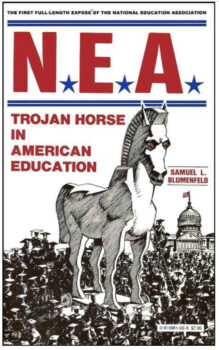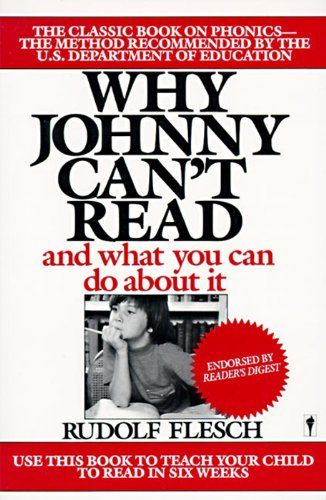Hasidic Schools – A Lesson Regarding School Choice
The first compulsory attendance laws in America were introduced by Horace Mann in Massachusetts in 1852. This created a shift from what I consider to be true “public schools,” which were open to the public, but controlled by parents in local communities, to “government schools,” which we have had ever since. Today’s schools are funded by the government, regulated, and controlled by the government, and all of the standards are set and enforced by government dictates. By 1900, the U.S. government had an almost complete monopoly on education in our country, as virtually every state in the union had adopted compulsory school laws. If your child did not show up at these schools, you could be prosecuted as truant under these laws.
While most people were compliant and went along with the new government monopoly created by Mann, religious Catholics began looking for a way to give their students a religious education, rather than the “non-sectarian” version offered by the new government model. In 1925, in a U.S. Supreme Court case called, Pierce v. Society of Sisters, Catholics gained legal permission to opt-out of compulsory attendance laws and create their own parochial schools. In this landmark decision, the SCOTUS declared that a child is “no mere creature of the state,” and recognized that parents have a compelling interest in the education and upbringing of their own children.
In 1972, another pivotal case, Wisconsin v. Yoder, opened the door for the Amish to opt-out their children from government schools and form their own Amish schools. This enabled them to hire their own teachers and choose their own (religious) curriculum. In the 1970s, there was an explosion of Christian schools being started by Protestants.
Brave pastors in places like Kansas and Nebraska had begun using the classrooms in their church buildings not merely for religious instruction on Sunday, but to teach subjects like Math, Science and History on Monday through Friday as well. Not knowing they were in violation of Mann’s compulsory attendance laws, many of these pastors found themselves handcuffed and arrested while the doors of the church buildings were chained and padlocked. Thankfully, legal organizations like the Rutherford Institute and Christian Law Association began representing these church schools and winning in court. Publishing houses like ACE School of Tomorrow, Bob Jones Press and A BEKA started creating K-12 curriculum for the Christian school classroom and a new movement was underway.
On the heels of the Christian school movement came the modern-day homeschooling movement which began in 1983 when Homeschool Legal Defense Association (HSLDA) was formed as well as about twenty-six state homeschooling organizations, many of whom created their own homeschooling conferences.
The primary reason all these efforts were made from 1925 through today was to create an alternative system of schooling and education that was not controlled and regulated by the state or federal government. The way the courts have always seen these scenarios is that they are totally separate from, and free from control by, the government because they are privately funded.
With Shekels Come Shackles
There has been a massive push on the part of many conservatives in recent years to create legislation that would enable tax-dollars to “follow the student.” There are many variations of this: ESAs, vouchers, virtual charter schools, and many other public school / private school / homeschool hybrids. The mentality behind this, on the part of some conservatives is, “We pay our taxes, but we aren’t getting any benefit from our tax dollars. We have to pay to educate everyone else’s children, and we should be entitled to get some of our tax money back for the education of our children, even if we choose to send them to a private school or homeschool them.”
This sounds good on paper, but many liberty-minded skeptics of this plan have warned that whatever the government funds it controls. There is no free lunch. If the government pays for the schooling, they can dictate policy regarding how it gets used. Many school choice advocates have derided such views as being mere conspiracy theories and even referred to such theories as being akin to Chicken Little falsely telling his friends “The sky is falling,” when everything was just fine.
Because most states have not yet adopted voucher systems or other such school choice options that fund private schools and homeschools (in fact many state constitutions strictly forbid it), we don’t have a lot of test cases to look at and prove definitively whether such predictions are accurate.
Alberta, Canada and Private School Vouchers
One case we have observed in recent years regarding this matter took place in Alberta, Canada in 2016 where the Canadian government ordered that all private schools in the province that accepted government funds would need to become LGBTQ-complaint (including curriculum compliance and transgender bathroom accommodations) in all their school policies. It turns out almost all private schools DID indeed receive such funds and were susceptible to this order. In Alberta, there is not a separate homeschool exemption (you either homeschool through a private school or directly through the government), so all homeschoolers become impacted by this mandate as well.
Cases like this eventually find their way to courts where judges decide on the constitutionality of such cases, but it demonstrates the intent of government officials to bring private schools (and any homeschooling families connected to them) under their control through the use of tax dollars.
New York’s Hasidic Schools
In New York, there is a system of schools called “yeshivas.” They are institutions for the religious training of Jewish youth. In America, these schools for elementary-age students are called cheder, yeshiva ketana for post bar-mitzvah students and yeshiva gedola for high school students. These schools focus on teach the Talmud (Jewish religious writings) and the Torah (Old Testament scriptures). The intent of these schools is to pass on their religious heritage to the next generation.
For many years these schools operated as a class of private schools separate from the government system. In recent years, however, huge amounts of state funds became available to them, and they readily accepted them. In fact, over the course of four years, these schools received over one billion dollars in government money. This has now opened an investigation of their entire system by the New York government. This situation is likely to go through the courts for some time and it will be interesting to see the outcome.
Standardized Testing
The first regulation that came attached to receiving government funds was a requirement for standardized testing. This did not go well for these schools. Because government schools operate on pre-set government standards, their schools teach to the test. This was one of the objections many had to Common Core standards. The government can create a set of standards that they alone use, encourage employers to reject any students who do not utilize those standards, and penalize students who do not comply with the monopoly.
Regulating the Curriculum
Because the scope and intent of these Hasidic schools are different than the government schools, their students failed to perform well on the standardized tests. This has led to a push from the state government to regulate the curriculum. As a homeschooling parent myself, we often choose to focus on content that is not taught in most government schools (things like Logic, Constitutional Law, the Christian basis for our founding documents, free market enterprise (rather than socialism), ethics, Bible, and many other topics ignored by the government system). My boys are not taught that they can be menstruating persons and my girls are not encouraged to become transgender. We have a completely different approach to education than students in government schools. Our methods and content are radically different. So, it would not surprise me that students taught with different materials, that have a different intent, would fail to do well on a standardized test created by a government school.
I’d love to see government school students tested on their knowledge of the topics taught in our homeschool. Most would completely fail. It is true that most teenagers who attend government schools can list off the top ten rappers and best-selling video games, but few could list ten American presidents or explain the uniqueness of our representative constitutional republic (in fact, most are wrongly taught in government schools that we live in a democracy).
So, which set of standards should be used? The one by the government, or the ones set by private religious schools and homeschools? Most people, even conservatives, would say we should all abide by government standards. I would suggest that is because most Americans have attended government schools and have been brainwashed into believing the government should control education rather than parents. This really is the pivotal issue. No one wants to see students who do not excel academically, but ultimately, that is really a subjective issue. If you believe in forced universal conformity to a set of beliefs and ideologies pushed by the government, you will believe that all students should be forced to learn the same things, in the same way, at the same time as all other children.
If you believe in liberty, you will allow for diversity and freedom for students to be taught in unique ways, even if you personally don’t approve of the methods or content used for those students. I personally, as a Christian, do not agree with Wiccan ideology. But I fully support the right of parents to teach those values to their children if that is their sincere belief. Do I want my tax dollars going to teach Wicca? No, I do not. And most people don’t want their tax dollars going to support Muslim instruction or Christian instruction if they don’t hold to those views. So, what is the solution? All private education should remain truly private. If you pay for your own child’s education out of your own pocket, you can teach whatever you like to your child (or pay a teacher to do so). I can disagree with you, but I’m not going to be a fascist and force you to teach my beliefs, values, and ideologies. I’m not like the government. I believe parents are the best educators for their own children and should decide what they learn and when.


 By the 1950s, the crisis was so serious that the public was starting to ask questions. And in 1955, Rudolf Flesch published the explosive book, “Why Johnny Can’t Read,” blowing the lid off the quackery.
By the 1950s, the crisis was so serious that the public was starting to ask questions. And in 1955, Rudolf Flesch published the explosive book, “Why Johnny Can’t Read,” blowing the lid off the quackery.